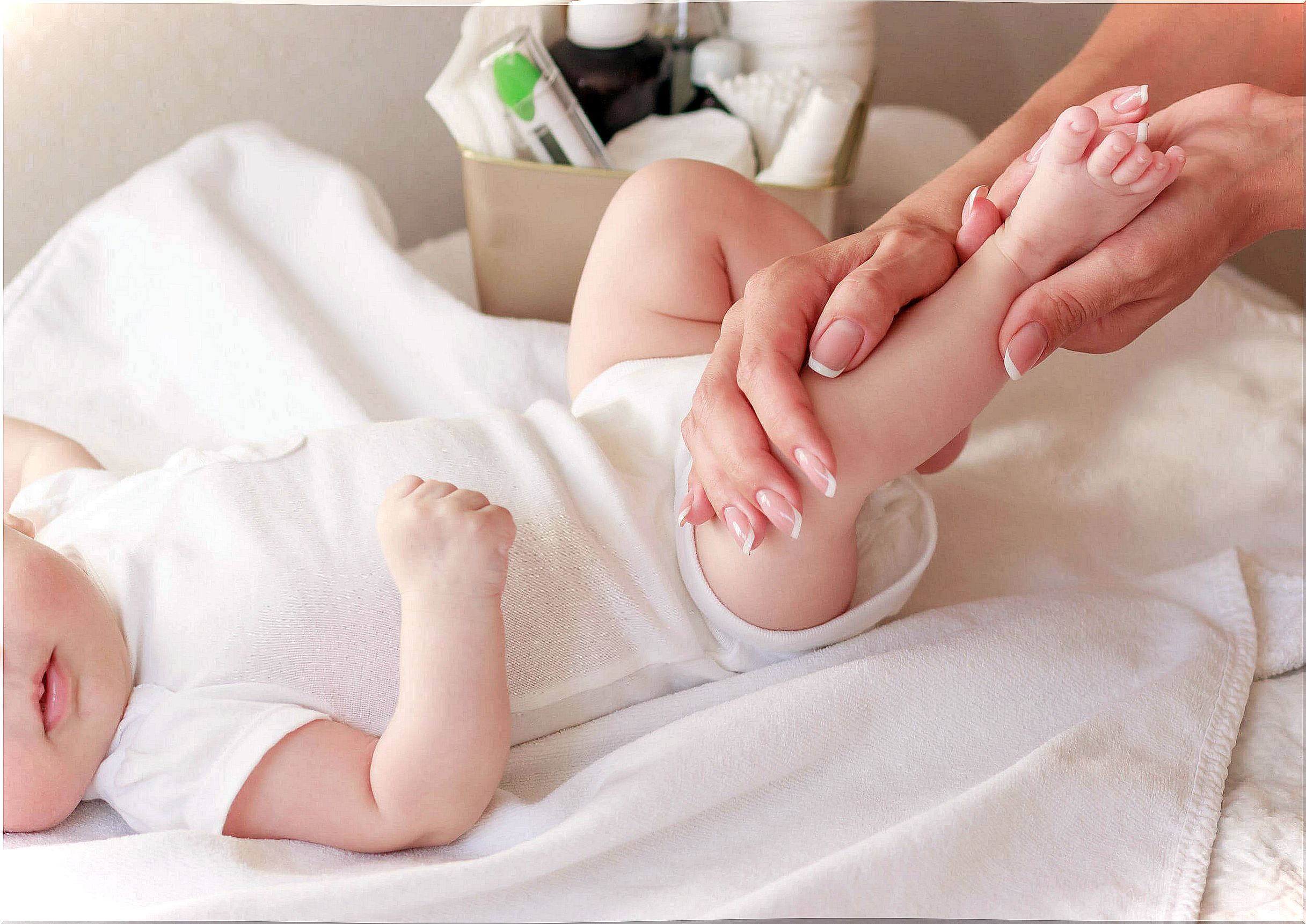Mongolian Spot In Babies: Symptoms, Causes And Treatment

Mongolian spot in babies is also known by the term congenital dermal melanosis , which, incidentally, is often more appropriate. It is usually single, large, dark in color and usually located in the gluteal region. Fortunately, it is a benign condition that disappears over the years.
Along the following lines you will discover its main characteristics, as well as the diseases with which, on rare occasions, it can present together. Are you interested in knowing a little more about this topic? Keep reading!
What characteristics does the Mongolian spot have?

The first time this injury is observed, it can be confused with a hematoma, that is, the accumulation of blood under the skin, which is usually the result of trauma. This is mainly due to its violet or brown color and its great extension, which in many cases is usually greater than 5 centimeters.
Its surface is flat, without local temperature rise or swelling. The Mongolian spot is also characterized by having somewhat diffuse limits (especially in black children) and not generating obvious symptoms such as pain.
It can arise both at birth and in the first weeks of life, so it is a disease that affects newborns or neonates, that is, during the first month of life. It usually appears in the gluteal region, although it is also possible that it appears in the extremities or other regions.
Why does this lesion appear?
The origin of the Mongolian spot can be understood from its medical term, congenital dermal melanosis . Do you know what melanocytes are ? It is a type of special cells in the skin of all humans that contain within them melanin, the main pigment that causes differences in the tone of the skin of different people.
In fact, when these cells are destroyed as a result of an autoimmune reaction, vitiligo occurs. In this pathology, spots of variable size appear with a very light coloration due to the progressive loss of these cells.
Melanocytes are usually located in the most superficial layer of the skin, called the epidermis . During embryonic development some of these cells are a little deeper, in the dermis. When these cells do not leave there in time, it is possible that this condition originates, hence it is also called congenital.
Is it associated with other diseases?
Yes. Although the injury itself does not usually have a pathological connotation, sometimes the pediatrician may perform special studies to determine the presence of other conditions. Some of these are as follows:
- Hurler’s disease : it is also known by the name of type I mucopolysaccharidosis , and it is a congenital disorder of metabolism. Some molecules stop working and substances accumulate in various tissues, causing problems in growth and psychomotor development.
- Sturge-Weber syndrome : It is characterized by the appearance of hemangiomas (tumors that affect the blood vessels) and is associated with other symptoms such as seizures and metabolic disorders.
Many of these diseases are considered rare, so it can be difficult for doctors to diagnose them unless several symptoms are expressed.
Can it be confused with other diseases?
Yes. There are several diseases within the group of dermal melanosis, as they have similarity in terms of their mechanisms of appearance, such as the blue nevus and the nevus of Ito .
Another condition that this disease can be confused with is neurofibromatosis. The main reason is that it manifests itself with multiple café-au-lait spots in various parts of the body, and over time it can cause neurological complications.
Something very particular about the Mongolian stain is that, due to its similarity to bruises, it can come to resemble cases of child abuse. Obviously, it can lead to multiple conflicts, but in most cases – especially since the injury takes much longer to disappear – a correct diagnosis is made.
Is the Mongolian spot treated?

The Mongolian spot does not usually require specific treatment, since over the years it disappears spontaneously. Some healthcare professionals may recommend avoiding exposure to sunlight, while procedures (such as lasers) are often limited to cases where the stain persists into adolescence or beyond.
A common and conspicuous injury
Although it is a benign condition, it is best to go to the pediatrician or dermatologist as soon as possible as soon as the lesion is identified, especially if there are strange symptoms. It is not advisable to go to natural products to treat this condition, as it could make the situation worse instead of improving it.









